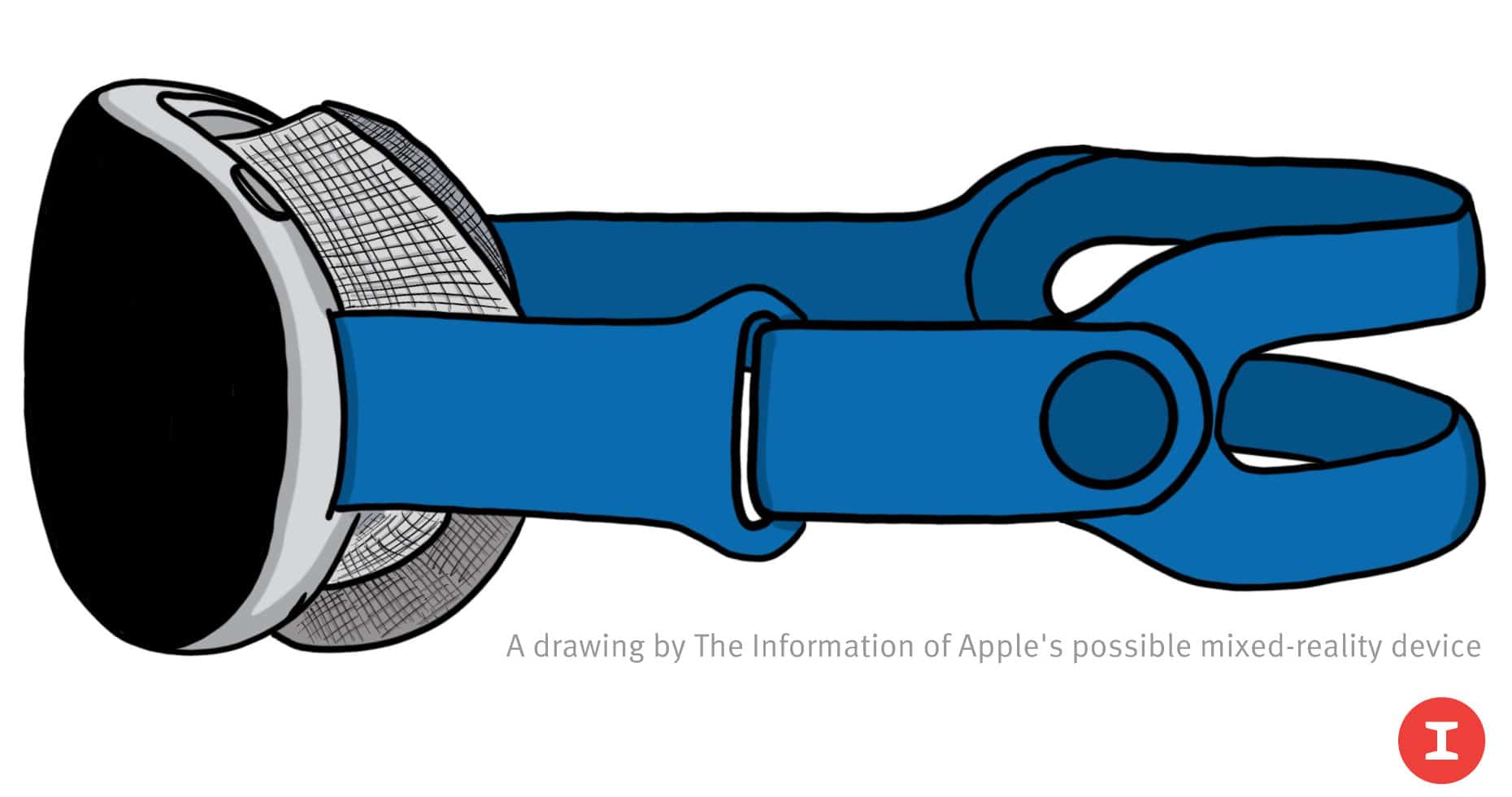Apple recently informed suppliers its mixed reality headset probably won’t release this year, Bloomberg reports.
Bloomberg, The Information, and supply chain analyst Ming-Chi Kuo all claim Apple is preparing to release a premium headset for VR and AR with high resolution color passthrough. Recent notes from Kuo claim it will weigh far less than Meta’s Quest 2 and feature dual 4K OLED microdisplays.
In February 2021 The Information claimed to have viewed images of a late-stage prototype “which show a sleek, curved visor attached to the face by a mesh material and swappable headbands”. The outlet drew this impression:

Bloomberg’s new report claims Apple was intending to announce in June at its Worldwide Developer Conference (WWDC) and ship later in the year. But “challenges related to overheating, cameras and software” mean the announcement could be pushed to late this year, and the release into 2023.
The overheating issue is said to be caused by trying to use a laptop grade processor in a lightweight headset. In November Ming-Chi Kuo reported the headset will use a new chip with “similar computing power as the M1 for Mac”.
As we noted at the time of that report, M1 is a fairly large chip. While its power efficiency is incredibly impressive for a laptop or PC, it draws more power and gives off more heat than the smartphone-tier processors used in existing headsets like Quest 2. That’s why Apple uses its lower power A-series chips in even its most advanced iPhones.
Last month, Bloomberg and The Wall Street Journal also reported around 100 employees recently left Apple to work on AR and VR at Meta, although Apple also secured some key Meta employees too.
The report also claims Apple has “weighed prices north of $2000” for the headset. Despite this, the report also says Apple is forecasting sales of up to 10 million units in the first year. Meta hasn’t revealed how many units the $300-$400 Quest 2 has sold in its 15 months on the market, but the face foam recall documents and a comment from Qualcomm’s CEO suggest somewhere in the region of 5-10 million.
If Apple can eventually pull off putting an M1-tier chip in a slim headset, it could deliver a significantly higher fidelity experience than Meta’s own upcoming take on a premium headset, Project Cambria. But Bloomberg’s report suggests doing that is proving harder than expected.





























